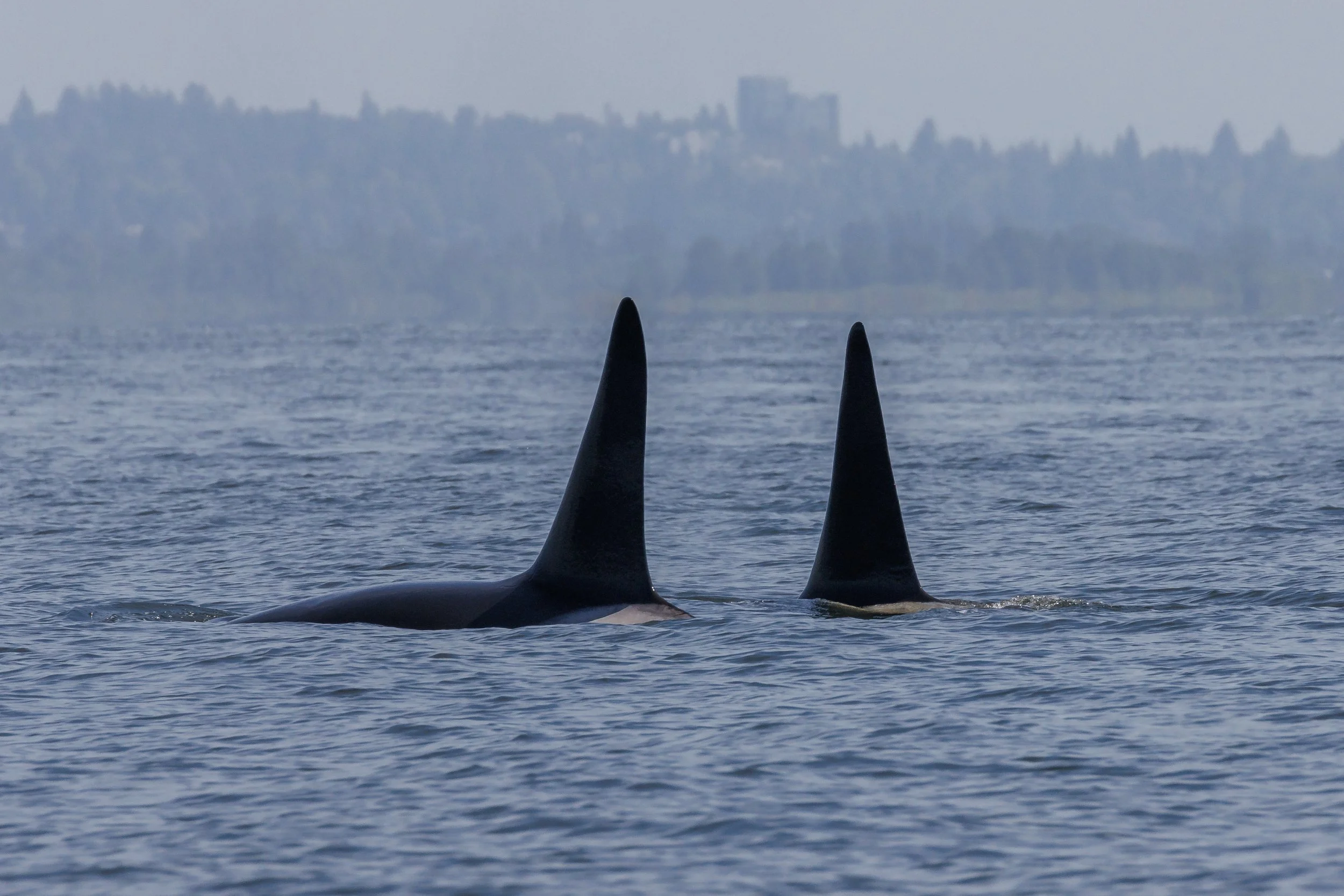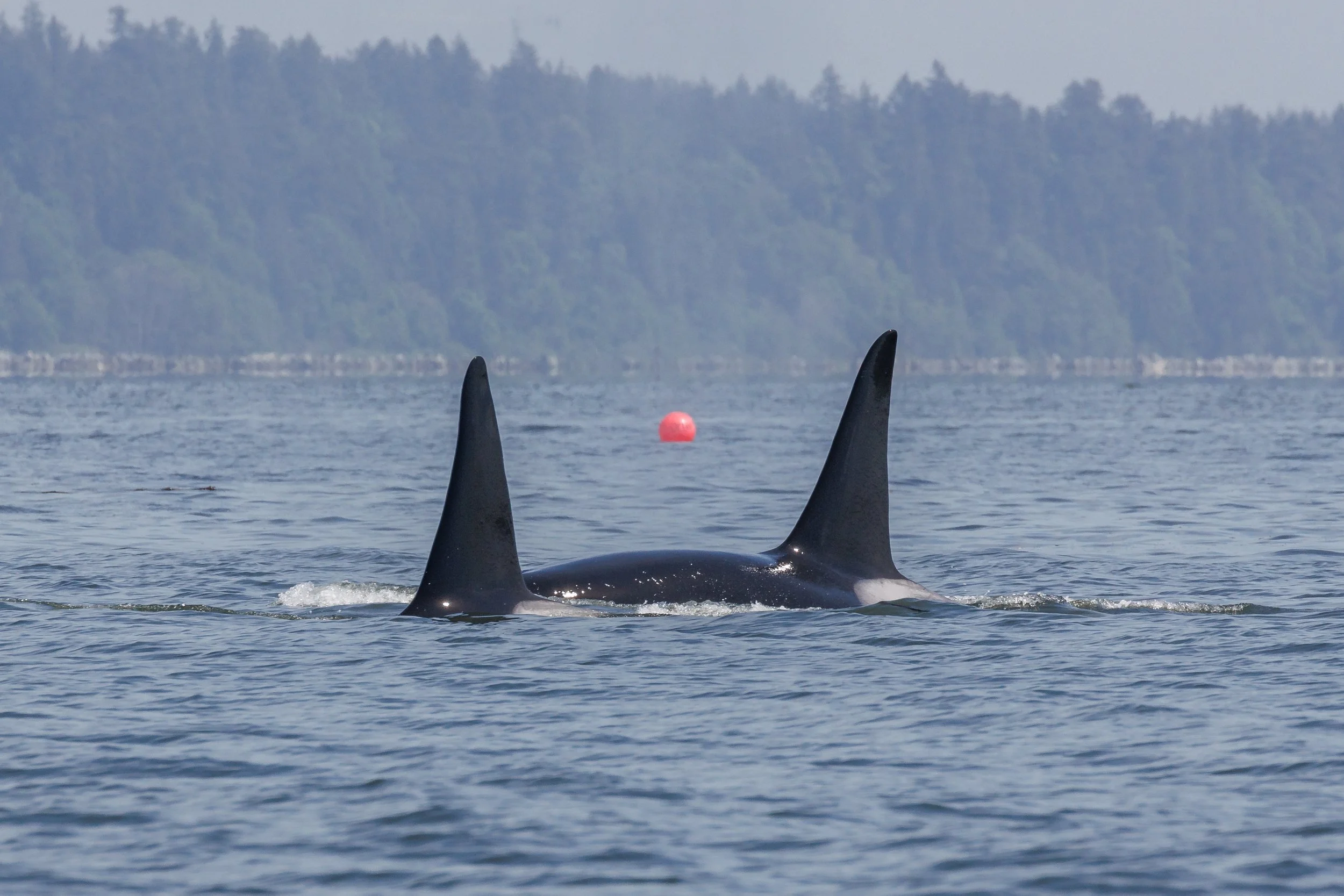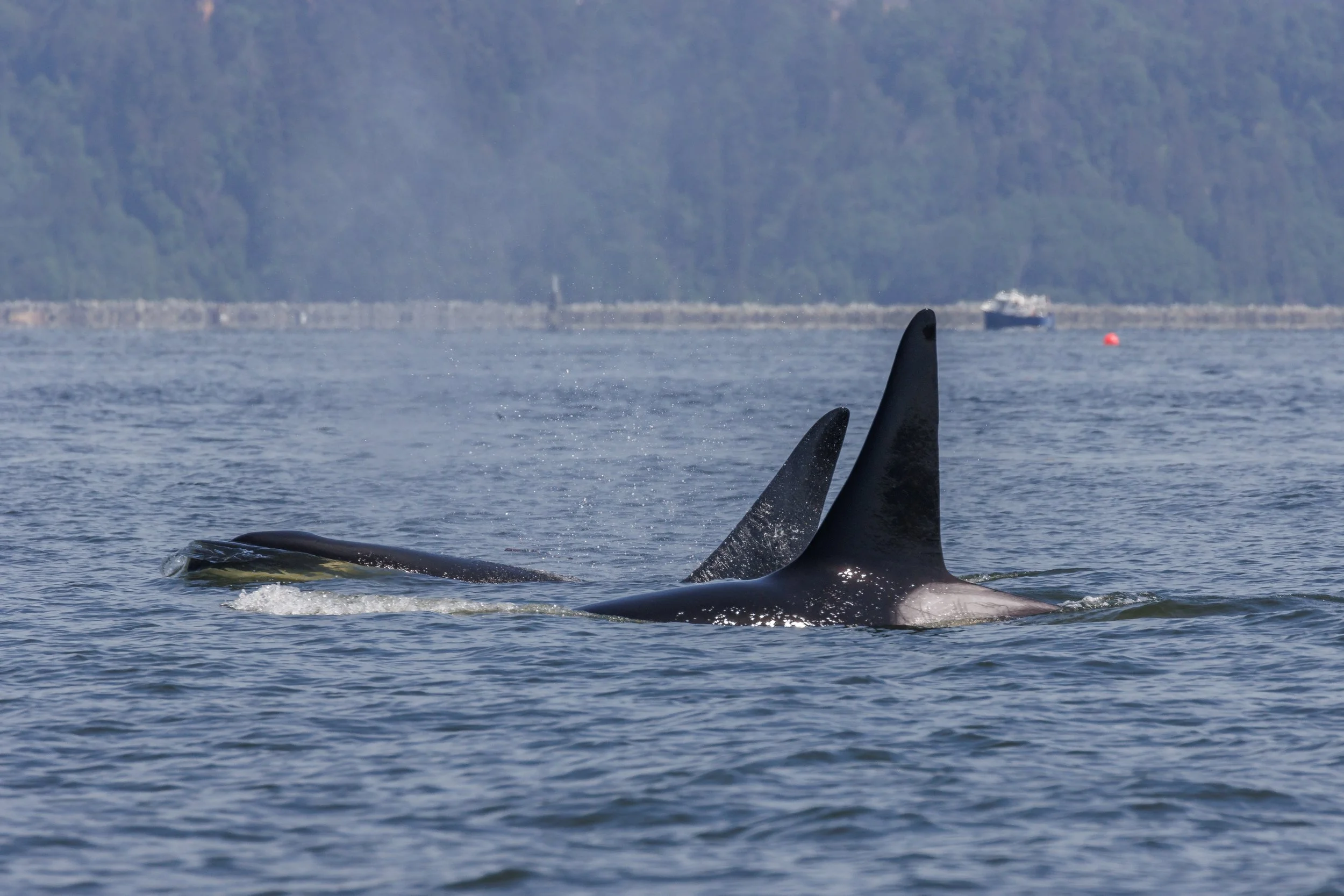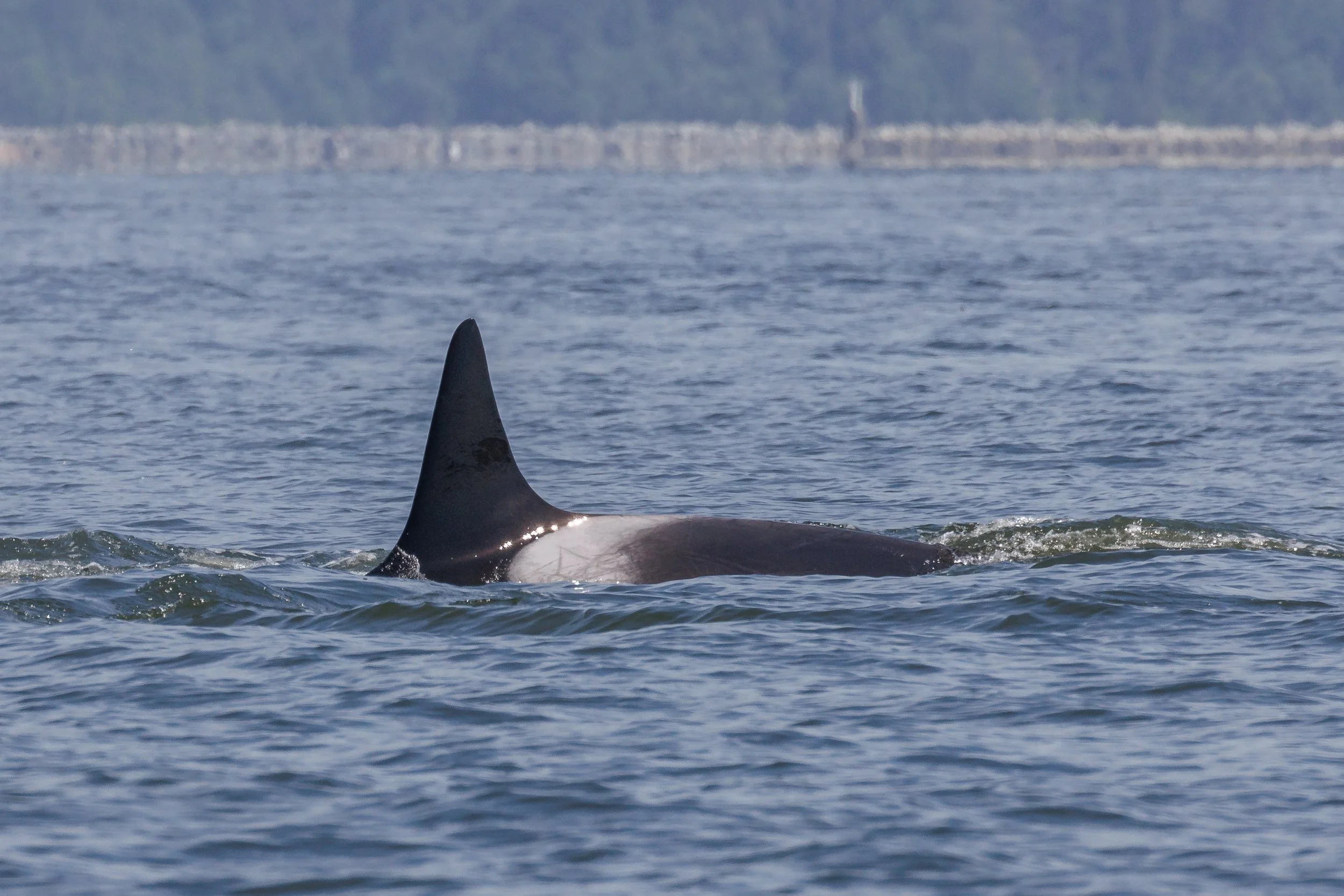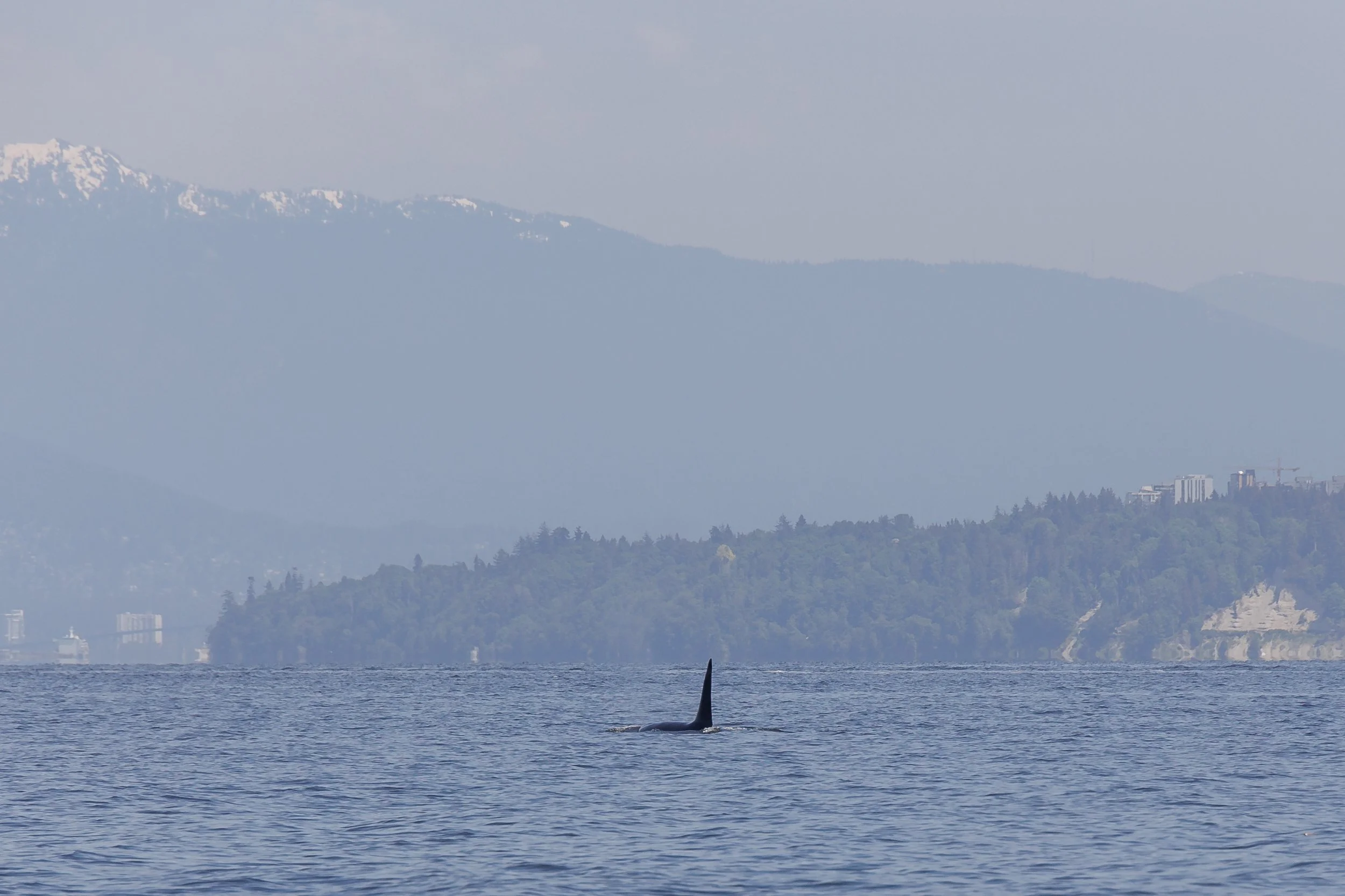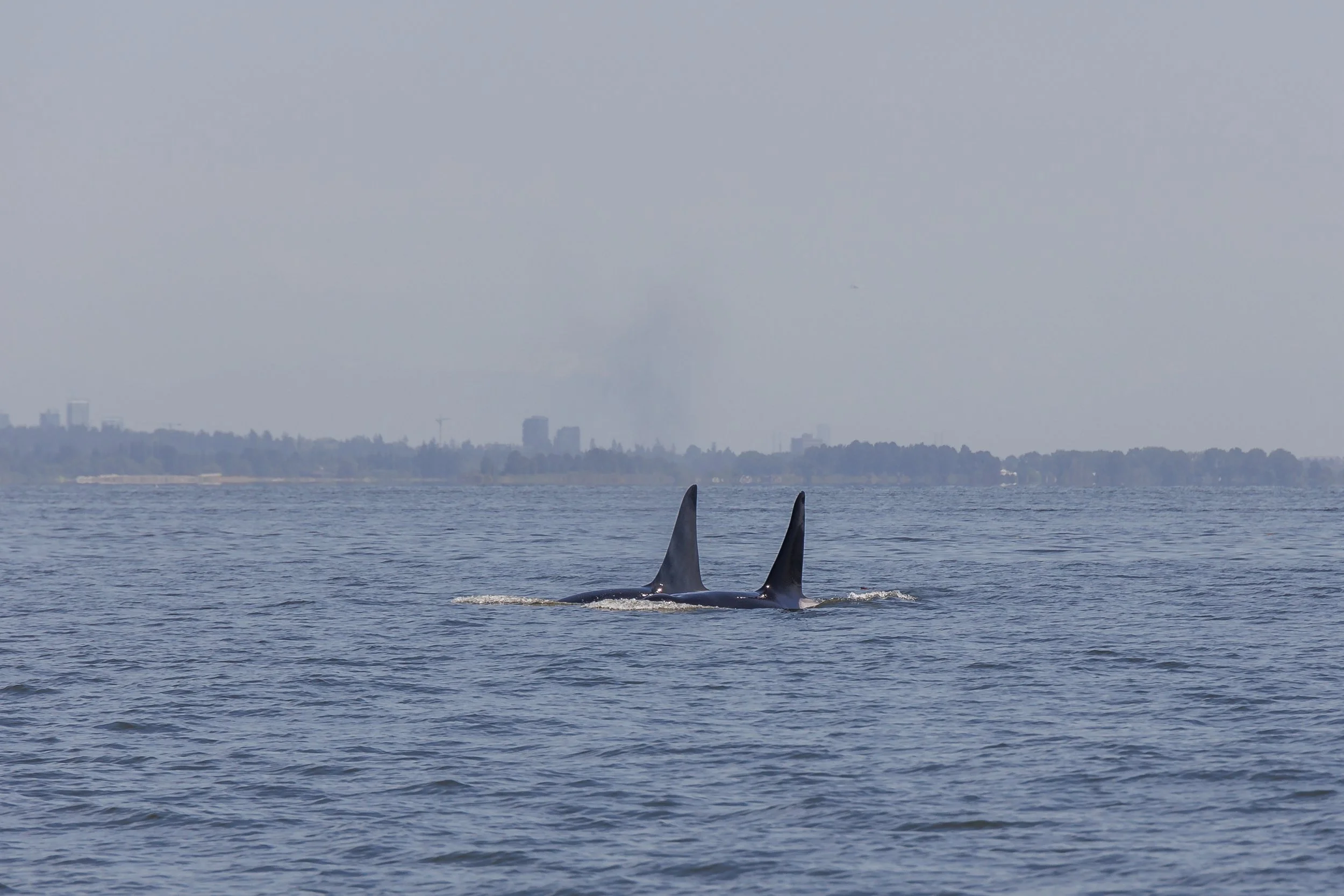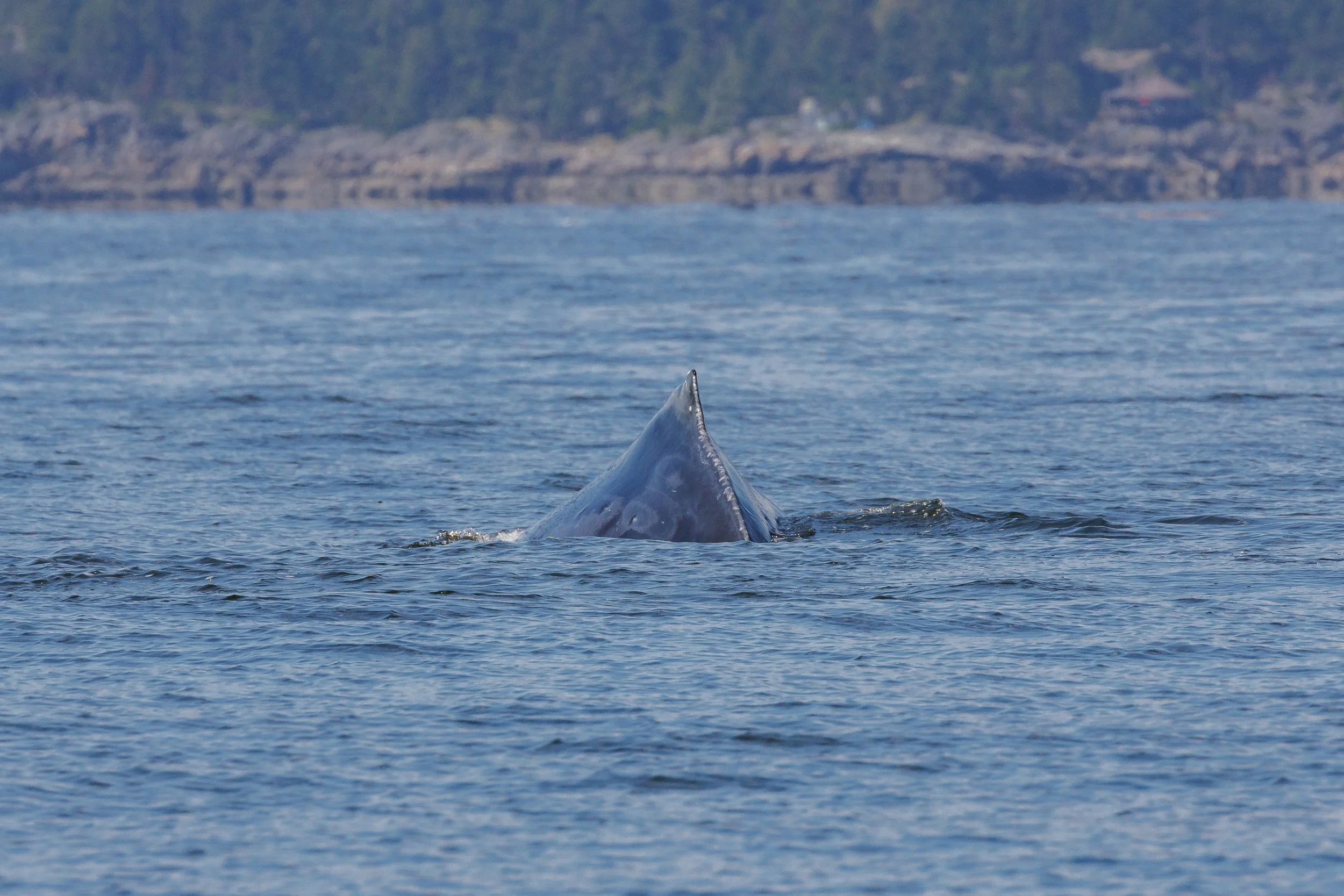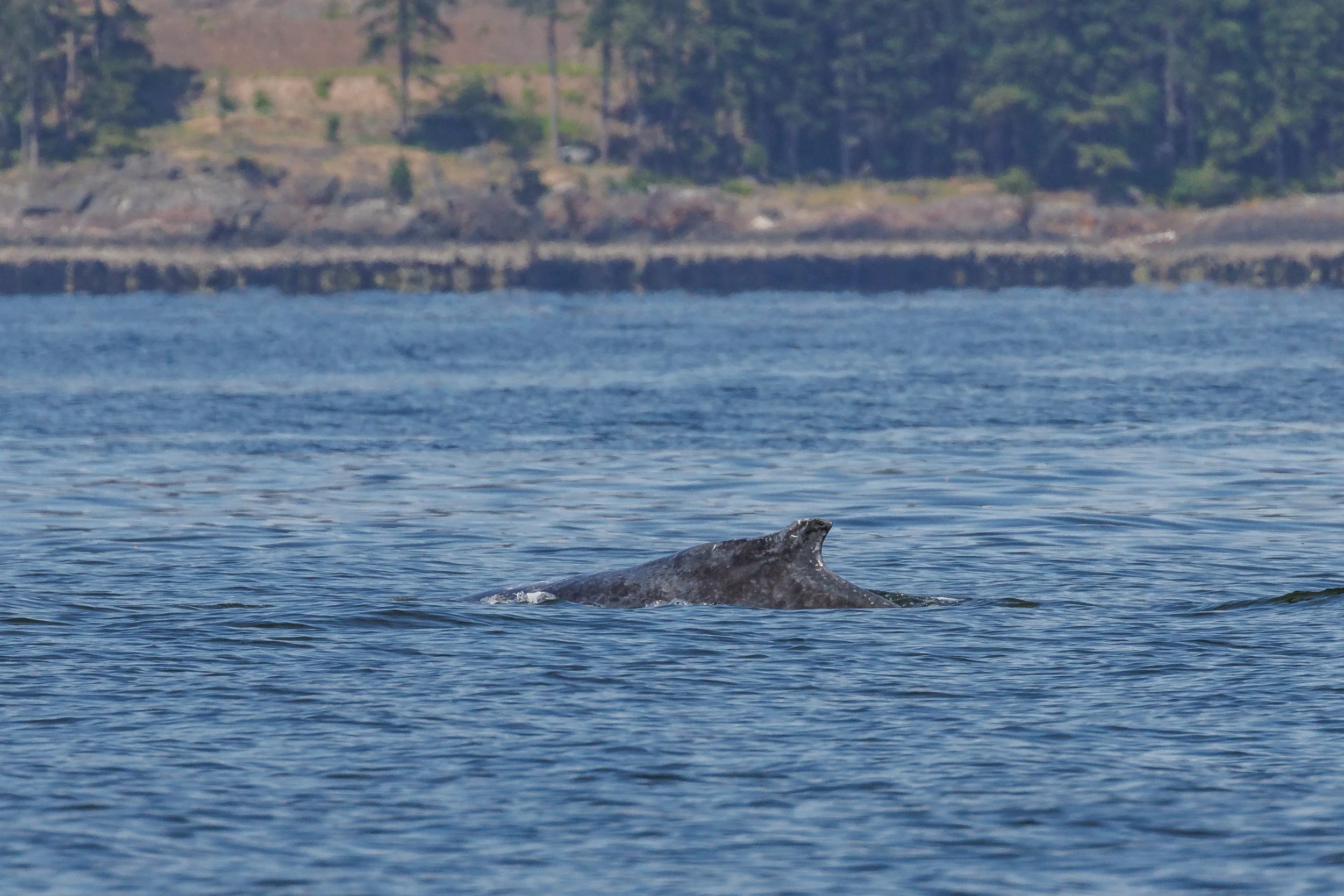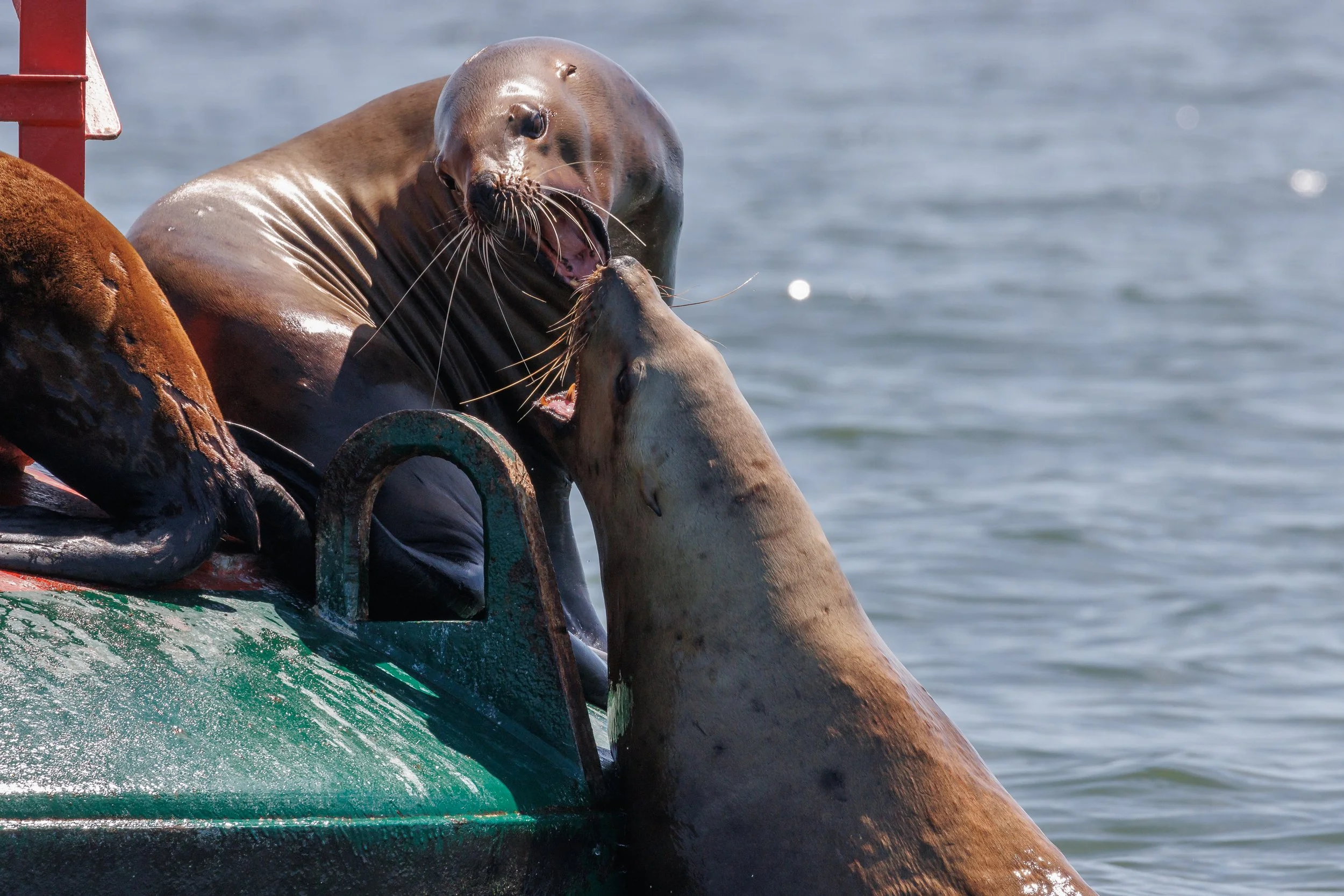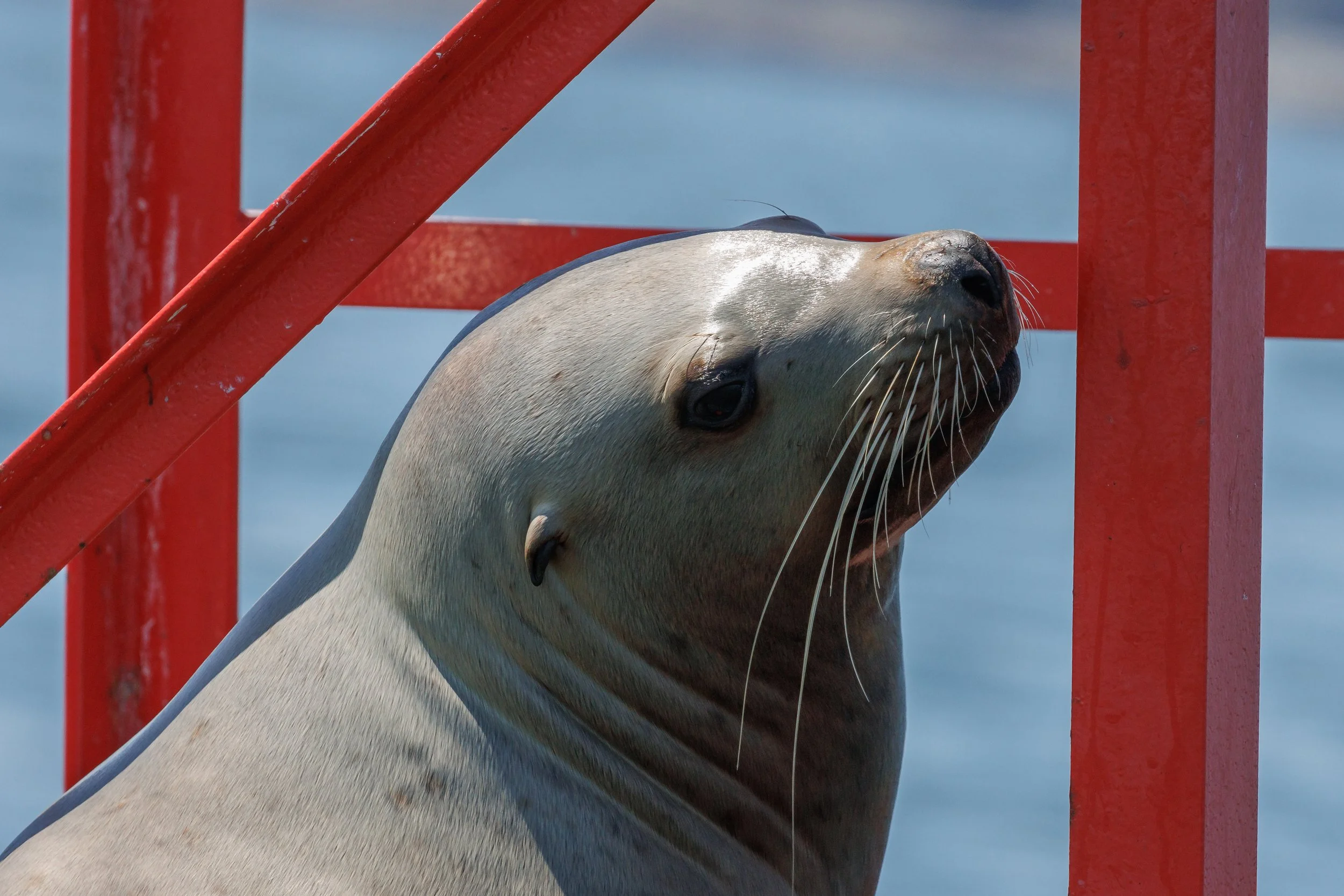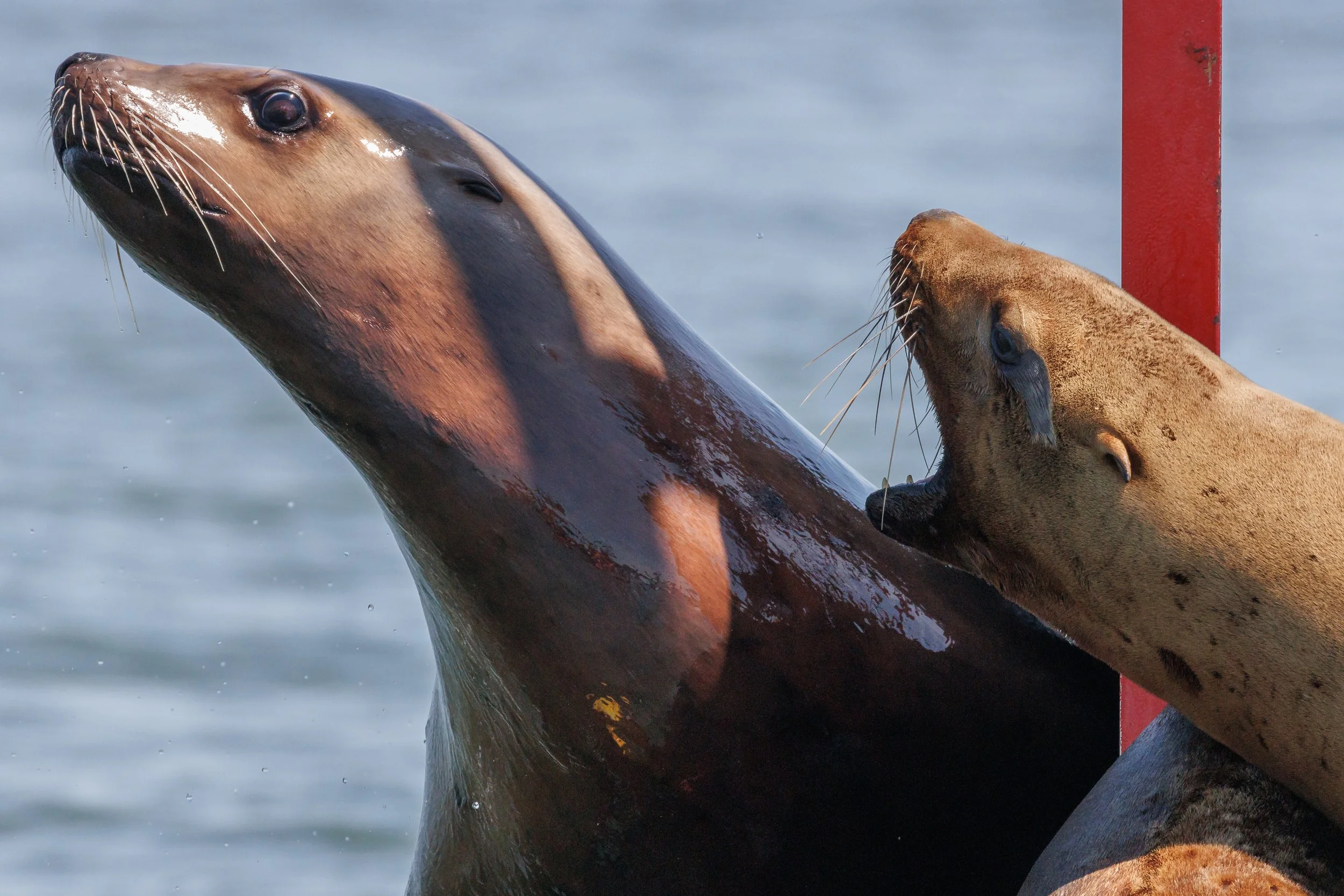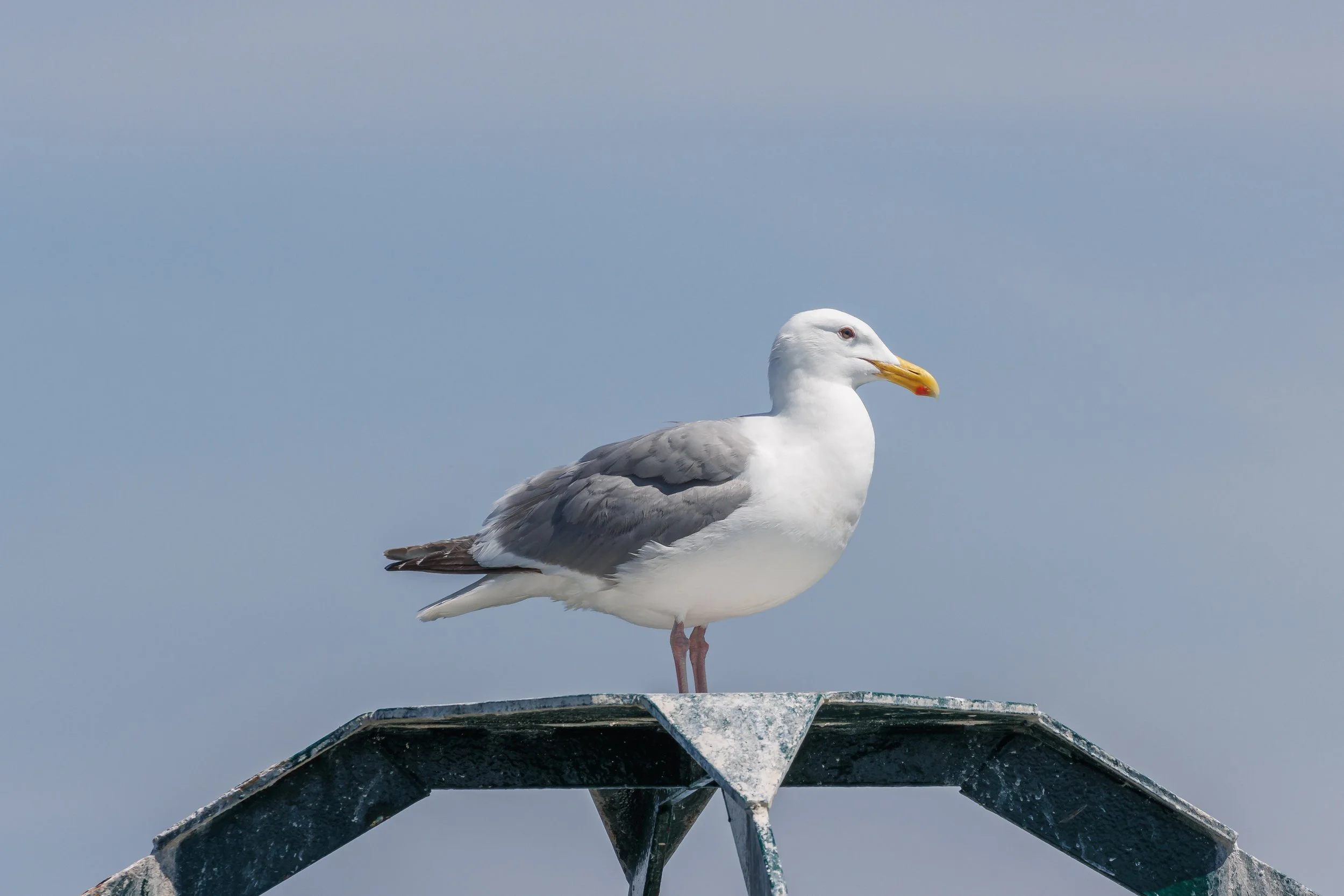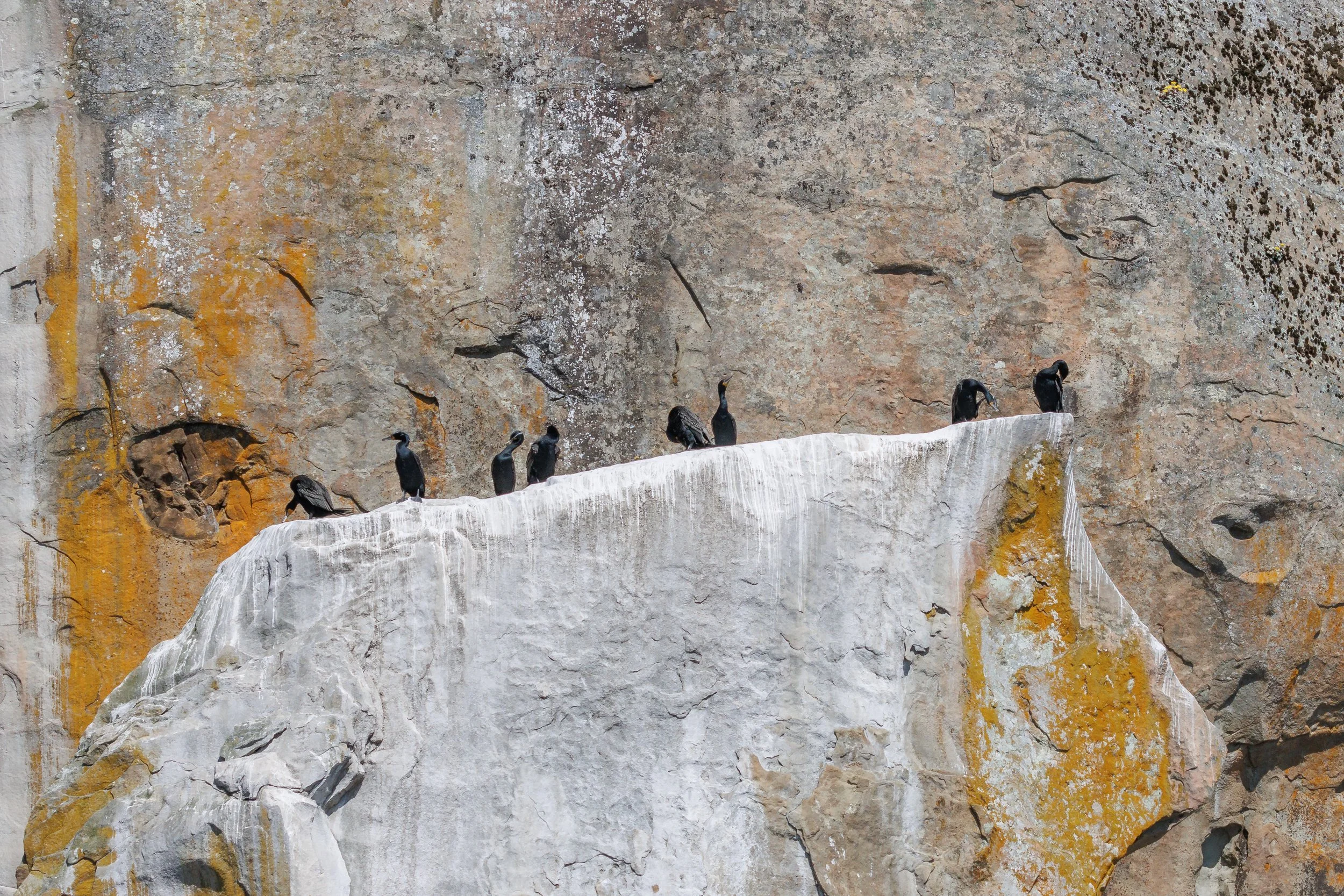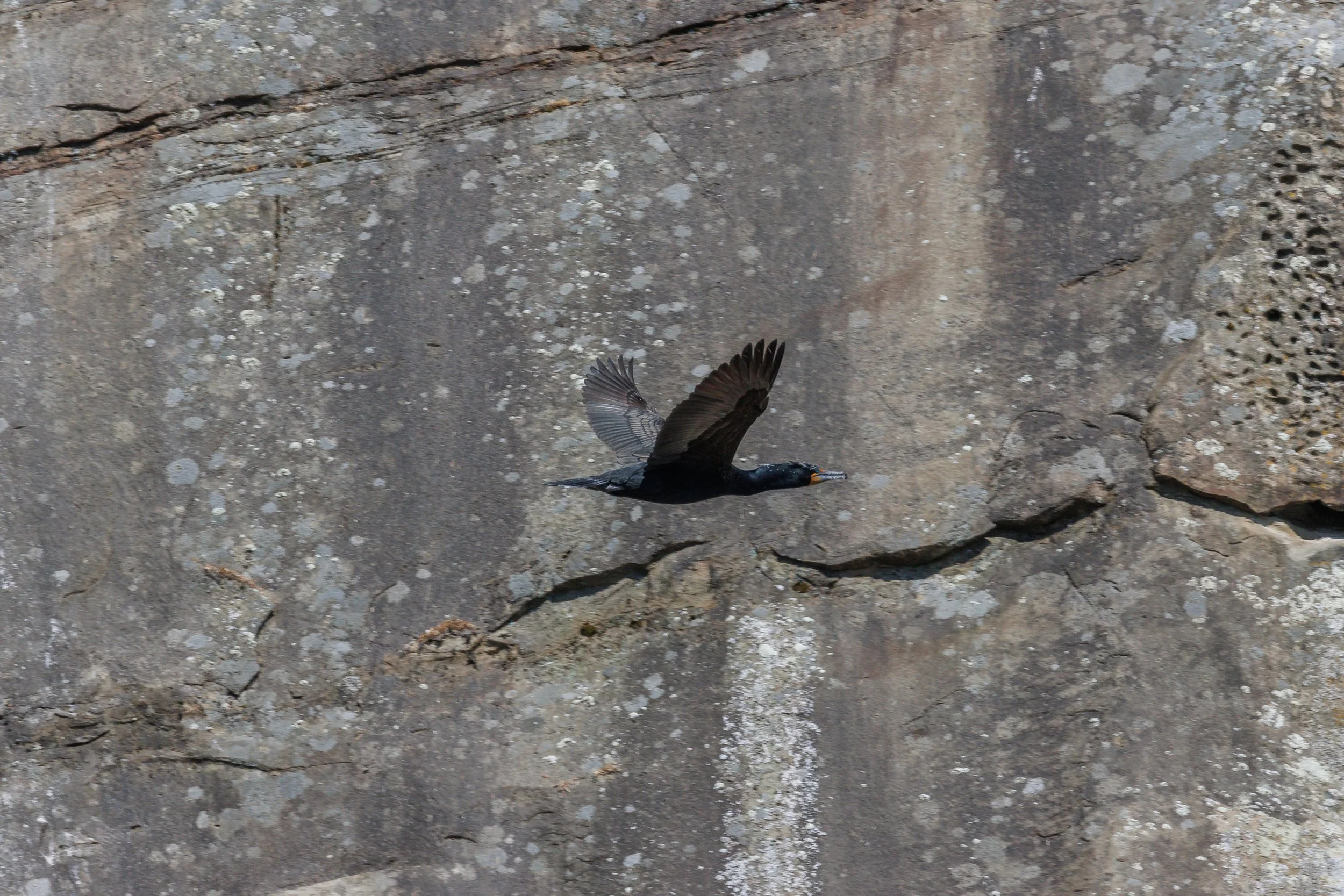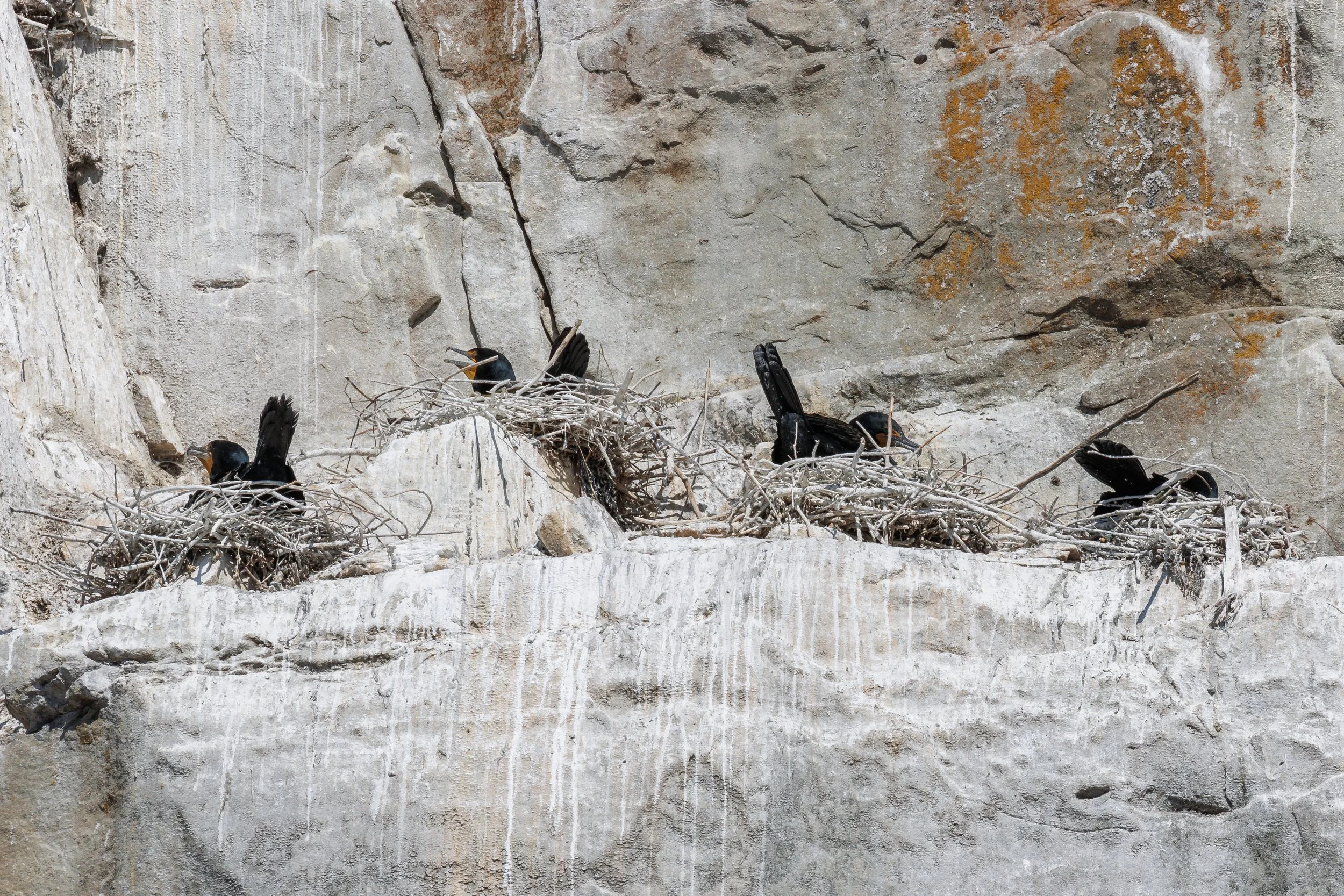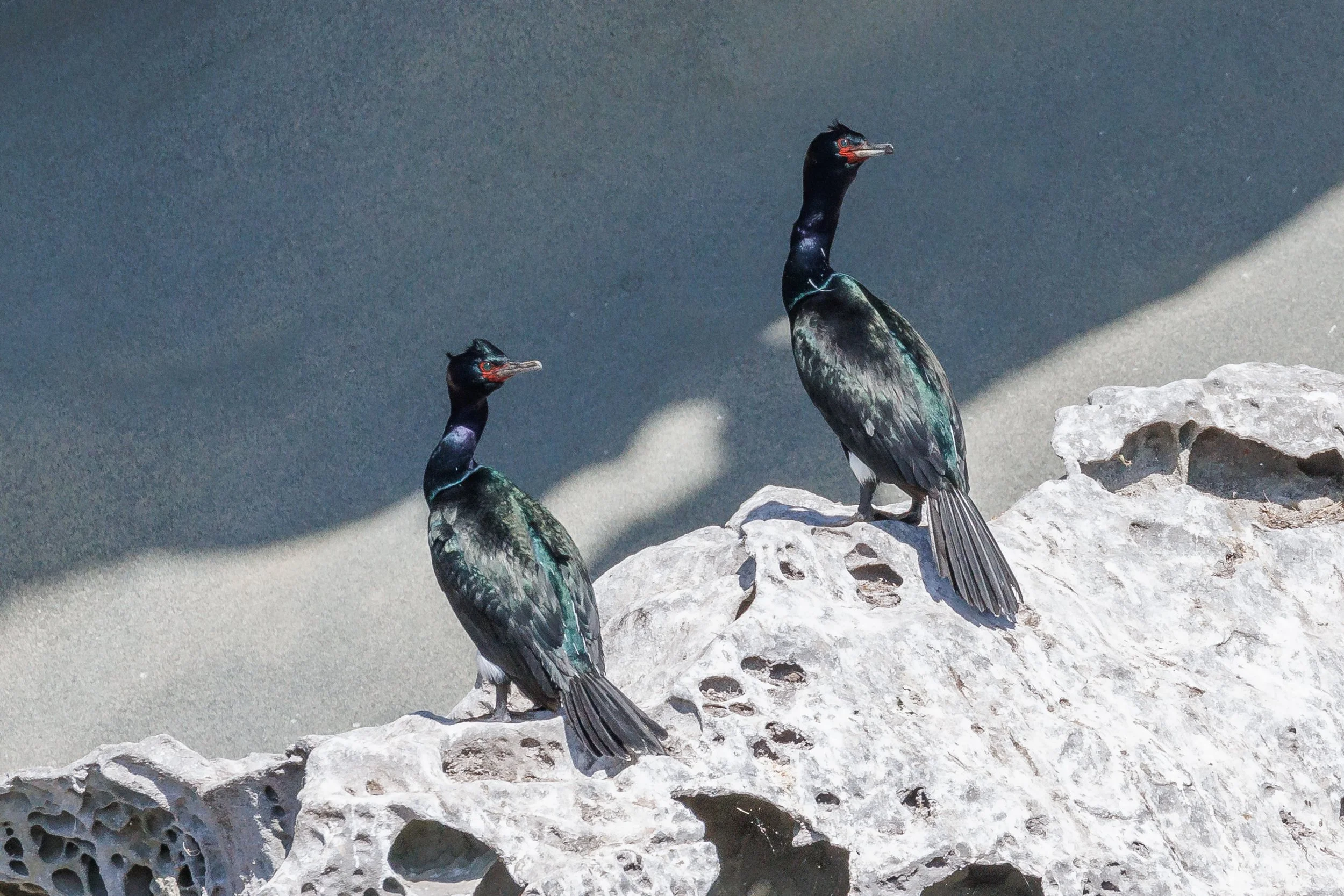May 20, 2023 - T101's, Scuba, and Schooner
Our boats left the harbour with fresh reports of whales nearby, so we headed off in that direction! There were both humpbacks and Orca not far from each other, so we headed out into the Strait of Georgia! It was about halfway across to Vancouver when we found our first group of whales. It was the T101s! The matriarch of this group Reef is over 54 years old! All the members of this pod are an impressive sight to see, as these are large whales. Reef herself is large for the transient population, but she is overshadowed by her two sons. Male orca will get to be much larger than females since orca have sexual dimorphism. A female orca won’t develop as large of fins as a male will, with females dorsal fins maxing out at around 3 feet tall, whereas the male orca will develop a 6-foot-tall dorsal fin as an adult.
With Reef being one of the older females in the population, she is likely not reproductive anymore. Orca, just like humans, will go through menopause! With only sons bearing her number, The T101 name will die when her sons do, since the names are passed from mother to her offspring. The number will get a letter added to it, depending on the order they were born. If a female with a letter has offspring, they will get a number added onto the end, and so on and so forth it goes to keep track of the lineages. With older orca like Reef though, sometimes the numbers don’t tell the whole story. The T101s are as follows:
T101 Reef ♀ (≤1969)
T101A Rush ♂ (1993)
T101B Lagoon ♂ (1997)
Looking at this you would think that Rush is Reef’s first born since he has an “A” at the end of his number. In reality, Rush has/had two older siblings. T100 Hutchins was actually Reef’s first recorded offspring, but at the time she was old enough and got her own number instead. There was also another son, T102 Beardslee, who was the second born to Reef. Unfortunately, Beardslee passed away in 2020 when he was 36 years old.
Reef, Rush, and Lagoon were travelling together today, and interestingly, they were heading the same direction as a pair of humpbacks that were only about a mile away! After our time with the Orca was up, we headed over to the humpbacks to see who it was.
This was also a pair of siblings travelling together, the 2019 and 2021 calves of Zig Zag, Scuba and Schooner! These two have been spending lots of time together in the Howe Sound area lately, with reports of them lunge-feeding nearly every day! This time though, we caught them resting and travelling. It was still great to see these two young whales though! Having the siblings travelling together is interesting in itself. We don’t really know if they would recognize that they are related, but sibling pairs have been sporadically noted throughout the years. We also sometimes see mothers travelling with past years’ calves, so maybe the humpbacks are more emotionally intelligent than was once thought! We will keep an eye out for these two throughout the year and see if they stay paired up! Usually, we find associations don’t last for too long, but we are happy to be proven wrong sometimes! As time goes on our knowledge about what to expect from the animals is constantly evolving, it’s one of the best things about biology!
Soon we also left Scuba and Schooner behind and headed off to see some Sea Lions and Harbour Seals, before making our way back to Nanaimo. It was a fantastic day, and we felt lucky to have seen both Orca and Humpbacks during the tour. All our photos from the day were taken by our onboard naturalists Aly Kohlman and Vanessa Vereschahen and can be viewed below!
Rush and Reef. Photo by Vanessa Vereschahen
Rush and Reef swimming together. Photo by Vanessa Vereschahen
Rush and with Lagoon surfacing behind him. Photo by Vanessa Vereschahen
Reef. Photo by Vanessa Vereschahen
Rush swimming with scenic mountains in the background. Photo by Aly Kohlman
Rush. Photo by Aly Kohlman
Rush swimming with Vancouver in the background. Photo by Aly Kohlman
Brothers Rush (front) and Lagoon (back) swimming side by side. Photo by Aly Kohlman
Blow from older brother Rush with younger brother Lagoon in the background. Photo by Aly Kohlman
Scuba going for a dive. Photo by Vanessa Vereschahen
Scuba peacefully swimming. Photo by Vanessa Vereschahen
Scuba enjoying swimming freely after his traumatic entanglement the year before. Photo by Vanessa Vereschahen
Scuba fluking before a deep dive. Photo by Vanessa Vereschahen
Schooner going for a dive. Photo by Vanessa Vereschahen
Stellar sea lions, can you see the size difference between the males and females? Photo by Aly Kohlman
Nap time for our Stellar sea lions. Photo by Aly Kohlman
Stellar sea lion enjoying the sun on a buoy. Photo by Vanessa Vereschahen
Stellar sea lion trying to find a spot on the buoy. Photo by Vanessa Vereschahen
Stellar sea lions fighting over prime buoy real estate. Photo by Vanessa Vereschahen
Stellar sea lion modeling on the buoy. Photo by Vanessa Vereschahen
Stellar sea lions aren’t always great at sharing space on the buoys. Photo by Vanessa Vereschahen
Harbour seals checking out our boats. Photo by Vanessa Vereschahen
Harbour seals enjoying the sunshine out of reach from the orcas. Photo by Aly Kohlman
Photogenic gull. Photo by Vanessa Vereschahen
Canada goose, not all Canadians are friendly. Photo by Vanessa Vereschahen
Oyster catchers. They have pink feet and red beaks! Photo by Vanessa Vereschahen
Cormorants, can you guess what is giving the rock its white coloration? Photo by Vanessa Vereschahen
Cormorant flying back to the nest. Photo by Vanessa Vereschahen
Cormorants in a busy nesting site. Photo by Vanessa Vereschahen
Cormorants checking out the boat. Photo by Vanessa Vereschahen

